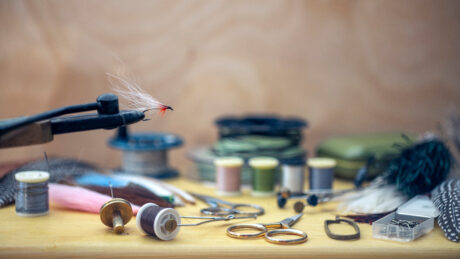
You can go down a rabbit hole when it comes to fly tying. The craft of creating artificial flies to imitate insects and other aquatic creatures as bait for fly fishing can be a wonderfully creative and relaxing hobby, but it can also become an obsession for those who are truly passionate about it.
Fly tying is an art that requires precision, skill, and the right tools. Whether you’re a beginner or an experienced fly tier, having the right equipment can make all the difference in creating beautiful and effective flies much easier. Here are the 13 (and then some) essential fly-tying tools every fly tier needs:
1. Fly Tying Vise: A quality vise is the cornerstone of any fly-tying setup. This tool holds the hook securely, allowing you to work with both hands-free. Look for a vise that can accommodate a wide range of hook sizes and offers stable support with a heavy pedestal base or clamp. Options include lever action vises for most tying needs and spring-loaded vises for larger patterns.
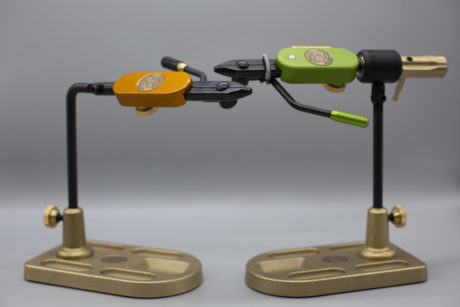
2. Bobbins: There are a ton of bobbins on the market today; choosing a bobbin can be budget-oriented or just personal preference (easy to thread, spool tension adjustment, ceramic or not, and the list goes on), but for us, it’s mainly about having multiple bobbins. At a minimum, we like to have one set with thread and one with a flat braid. This helps avoid wasting expensive materials, and switching materials to be used quickly and efficiently makes things move smoother.
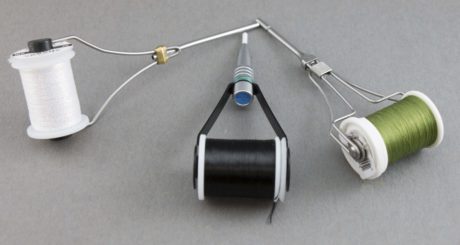
3. Scissors: We use up to four scissors while tying a fly. Good sharp pair for thread and materials only, a braid scissor for cutting articulation/stinger braid, a junk pair for wire and lead, and occasionally a thinning scissor to make tapered tails on sculpin-type patterns.
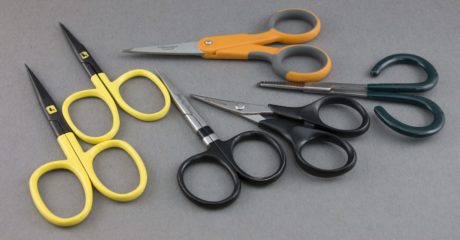
4. Bodkin: Since we do a lot of composite loops and just dubbing loops in general, a bodkin is a big piece of picking out the material and is a must on the bench. It’s the toothpick of tying. Just don’t try substituting a bodkin with a toothpick. Trust us, it doesn’t work.
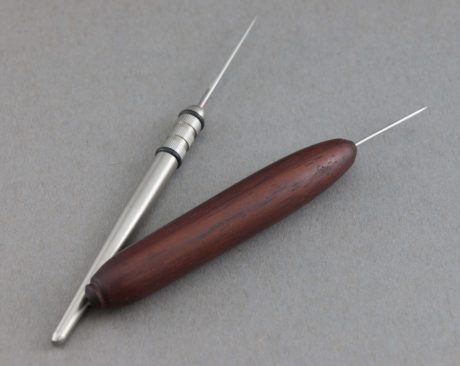
5. Brushes: We keep a variety of brushes on the bench. While stiff brushes can be hard to come by, we use them to brush out materials in dubbing loops and to brush out heads or bodies after we wrap them.
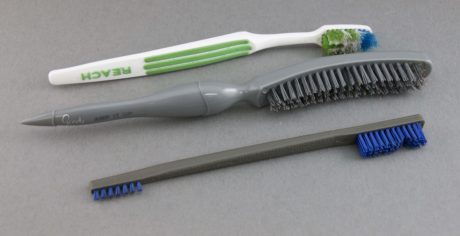
6. Combs: We use a lot of rabbit and fox combs to get the underfur out, allowing us to get a smaller and more manageable diameter for wrapping, reducing bulk, and reducing the weight of a wet fly weight. Combs are great with deer hair and craft fur. You’d be surprised how much underfur is in craft fur.
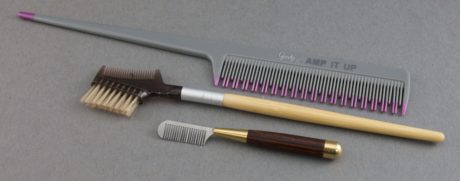
7. Hackle Plier: Popping a dubbing loop is annoying and downright frustrating. Hackle pliers are a handy tool for us. Grab your hackle pliers and save that loop. It’s also a handy tool to grab a strip of the rabbit or anything you are wrapping, for that matter. There are a variety of styles and sizes. You can find one that will fulfill most of your needs.
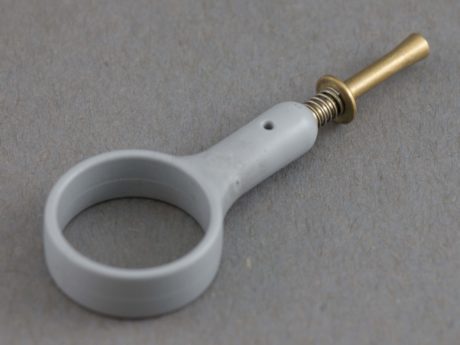
8. Composite Loop Ruler: This ruler, designed by Jerry French, is a must for the composite loop tier. Measuring out your material and knowing exactly how many wraps you will get is essential to a good composite loop fly.
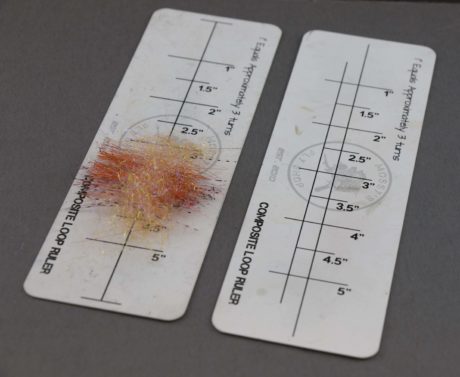
9. Dubbing Twister: Since we use dubbing loops in just about every fly we tie, a good dubbing twister is a valuable tool on the desk.
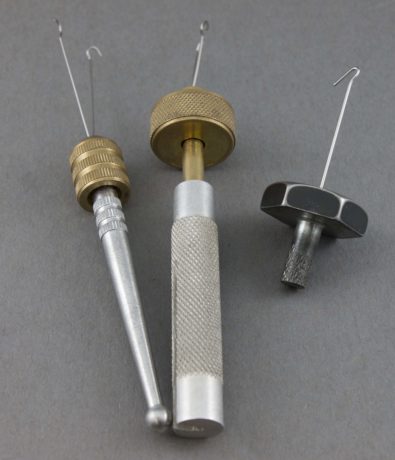
10. Material Clip: These potato chip-looking bag clips have saved the day more than once. These clips are fantastic with rabbit cut from the hide, fox, ostrich and the list goes on. These clips allow you to manage loose floppy materials for your fly, freeing up your hands and making placing material in a loop a breeze. It’s like having a third hand.
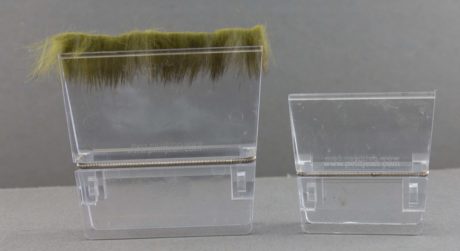
11. Material Holder: What we are showing here are the small gear holders from Nite Ize, these little bendable ties are great for holding down anything you need to hold back and out of the way until you are in need of it. Small hair clips are a great option for this as well.
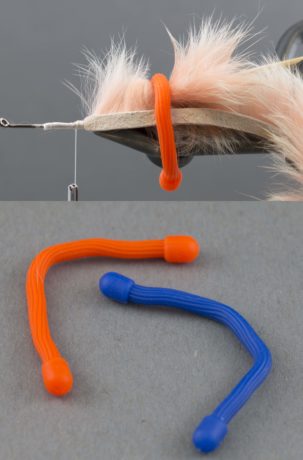
12. UV Resin and Light: UV resins have replaced head cement for us. The ability to apply a small amount and hit it with the light, and you are done in seconds, has proven it’s worth time and time again. One thing we have learned in the UV resin craze, is to buy a good light the first time. There are many light options on the market, but we have found that the cheaper lights burn up batteries and wear out fast.
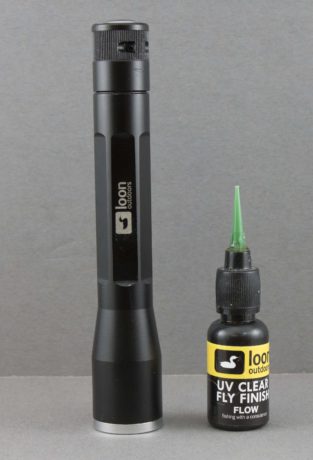
13. WAX: Wax is an important item when using dubbing loops, keeping material in place and not letting it get dumped on the table makes for a lot less frustration. We really like Overton’s Wonder Wax.
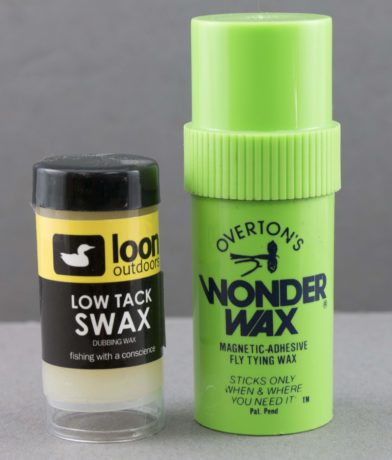
Many tying tools are derived out of necessity. Some are simply utilitarian. Here are Some other handy tools you should consider adding to your Fly Tying Kit.
Cutters: We tie a lot of articulated and stinger styles, so we cut a lot of steel. A good pair of wire cutters is a must to get your fly a good, clean finish. Like mono tags are a no go, so are metal shank tags.

Shank Adapter: We tie on a lot of shanks or cut hooks for articulated style patterns. Back in the day many vises did not hold a hook shank very well at all. The HMH tube fly adapter was the first tool we used to hold a shank, and it works great. Since we tie on Regals, we approached Regal about adding a grove to the jaw to hold shanks. This has proven to be a great option, not requiring extra parts to float around on the desk and get lost.
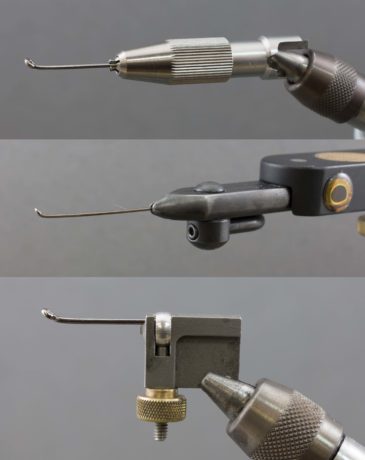
Rubber Band: I keep rubber bands on my vice to hold a rear hook back and out of the way on articulated-style flies. Keeping that hook back tight helps keep a hook point out of your finger.
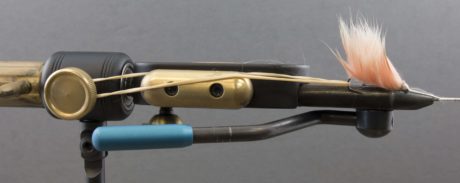
Other Gear Topics:
Leave a Reply